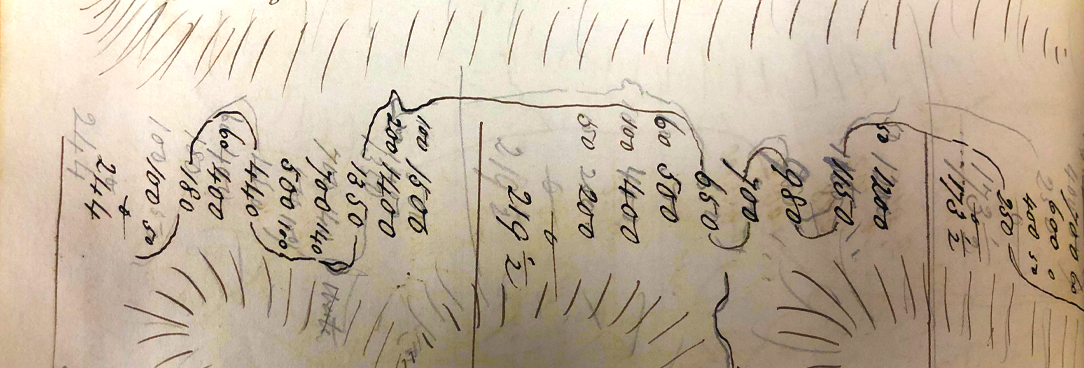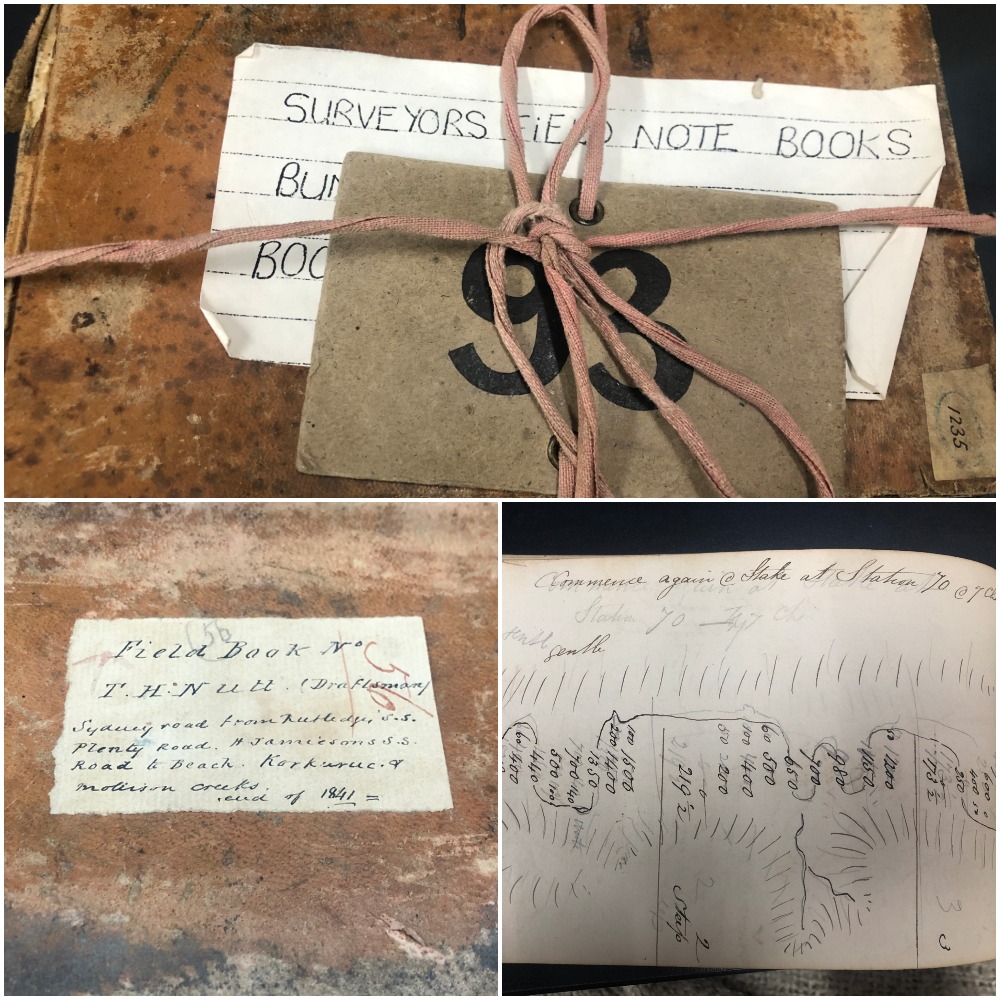
Author: Public Record Office Victoria
Among the fascinating articles filling the more than 180 pages of the latest edition of the Victorian Historical Journal, is the Victorian history of Charles Bonney. Martin Williams, researcher and author of the article Charles Bonney and the Fertile Kilmore Plains, says that in Victoria, Bonney has never quite gotten the recognition he deserves.
“Bonney is quite famous and revered in South Australia but is virtually unknown in Victoria. My paper demonstrates that his pioneering work in Victoria is at least as important as that in South Australia, and in some respects is more important. These facts, based exclusively on eye-witness accounts, were previously hidden in archives such as those of Public Record Office Victoria (PROV).”
Martin utilised historic plans, surveyor’s field books, and inward registered correspondence files from the PROV collection in his research.
Below, Martin provides a summary of his work:
Charles Bonney and the Fertile Kilmore Plains - summary
Charles Bonney was famous as a pioneer of South Australia and is routinely referred to as the equal of Charles Sturt, Edward Eyre, and Joseph Hawdon. Bonney wrote an enigmatic auto-biography in 1877, naming his blazing of the trail of the Sydney Road and discovery of the fertile district of Kilmore as equal to his greatest achievements in South Australia. That was an oddity to modern eyes, and inspired my work to find out why he made those comments.
My research begins with Charles Bonney being the first to attempt to overland cattle to Melbourne in 1836 and then, with Charles Ebden, the first to overland sheep into the Port Phillip District in 1837. In thirteen days the pair overlanded 10,000 sheep into the District and transformed the economics of the pastoral industry. Their journey represented about 25 to 50 fifty ship loads of sheep from Van Diemen’s Land, the previous sole option for importation of sheep, and a hazardous and costly exercise in which entire shiploads of sheep could be lost. Bonney and Ebden made the trip with no loss. Dozens of overlanders from New South Wales followed the trail laid by the pair.
Bonney alone found the new Sydney Road to Melbourne and blazed its trail for others to follow in March 1837. It took nearly two days off the previous trip and passed along a large chain of spring-fed ponds at what became Kilmore. This new road also provided an enormous economic benefit to the infant Port Phillip District and Victoria and remained in place as the dominant transport route to Sydney for 139 years.
On this same journey Bonney recognised the pastoral and agricultural value of the unique Kilmore Plains, a volcanic undulating plain with fertile and arable soil and permanent water from three creeks across it. Bonney settled on it in June 1837 and placed a pastoral station on the chain of ponds on the future Kilmore townsite at the place which provided the abundant water for passing stockmen and travellers.
The best of the Kilmore Plains including the Kilmore chain of ponds and the Sydney Road across it were purchased four years later in a Special Survey by one William Rutledge. With its unique agricultural potential it was subdivided for agricultural sale or rent and rapidly became the largest concentration of population in inland Victoria, and by a factor of about ten. The location boomed and fed the pastoral industry across inland Victoria originally and then the Victorian gold mining boom after that. Kilmore still had a growth rate equivalent to gold mining towns like Ballarat and Bendigo until at least 1861.
My paper uses close analysis of inter-linking eyewitness accounts of the period to determine what Bonney did, when he did it, and its remarkable benefits. It includes the use of a trip account by the notorious bushranger George Commerford, the first time that his material has been used for constructive purposes.
Bonney’s contribution to the development of the infant District of Port Phillip and the later Victoria, in blazing the trail of the new Sydney Road and identifying and settling on the Kilmore Plains, was enormous and its significance entirely lost to history.
Bonney spent less time in Victoria than in South Australia where he is far better known, but his pioneering successes in this State have been revealed to be at least as important to Victoria as was his contribution to South Australia.
- Martin Williams
Read the full article here courtesy of the Royal Historical Society of Victoria.
Researching historic plans
The PROV historic plans collection is a collection of early surveys and other kinds of maps kept by the Department of Crown Lands and Survey between 1836 and 1984. Many historic plans in our collection have been digitised, while others need to be viewed in either microfiche or hard copy in the Victorian Archives Centre Reading Room.
In addition to the surveyor’s books pictured above, Martin utilised a number of historic plans throughout his research including plans of the Goulburn River from 1842. You can learn more about our historic plans collection on our website here.
You can also find more information and avenues for land research on our Researching land and property topic page here.
The Victorian Historical Journal
The Victorian Historical Journal is published once a year by the Royal Historical Society of Victoria. The edition featuring Charles Bonney and the Fertile Kilmore Plains came out on the 1st of June 2019. Other articles include histories of the Mallee, Benalla’s Migrant Camp and the Forgotten Girls of WW1 which was written by our Public Records Advisory Council President Judy Maddigan. More information about the Journal, including how to purchase a copy, can be found here.
Material in the Public Record Office Victoria archival collection contains words and descriptions that reflect attitudes and government policies at different times which may be insensitive and upsetting
Aboriginal and Torres Strait Islander Peoples should be aware the collection and website may contain images, voices and names of deceased persons.
PROV provides advice to researchers wishing to access, publish or re-use records about Aboriginal Peoples

